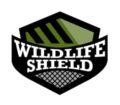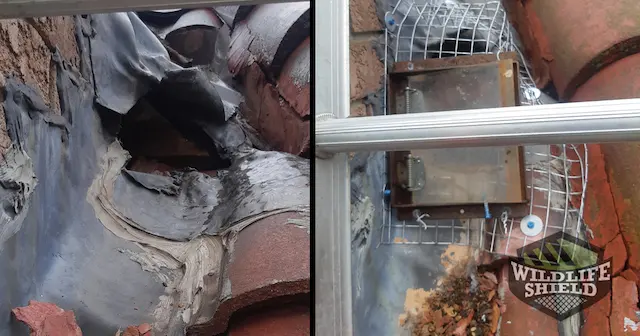The following article recounts a raccoon removal service in Etobicoke. In this case study, we will examine the efforts taken to remove a raccoon from an attic in Etobicoke and the installation of a one-way-door. We will also learn how raccoons can return to a property after being vacated and attempt to re-enter the structure.
Etobicoke, Ontario
Etobicoke encompasses the western area of the City of Toronto. Settled in the 1790’s by Europeans, the borough of Etobicoke became its own municipality in 1984. In 1998 it was amalgamated into what is now the City of Toronto.
Etobicoke is bordered by two main waterways- the Etobicoke Creek to the west and the Humber River to the east. It is home to some of the GTA’s largest parks including Humber Bay Park and Centennial Park.
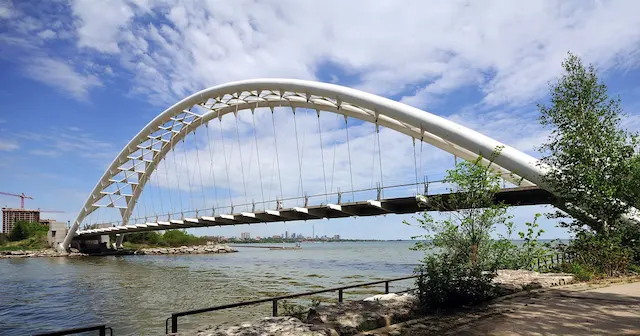
Most of the residential areas are of single-family homes. Quiet streets and cul-de-sacs line these quiet neighbourhoods.
Inspection
This Etobicoke customer contacted us after hearing noises in the attic and noticing damage to the soffit on the front of the house.
We dispatched one of our highly trained wildlife technicians to perform a full inspection of the roof and attic space. Because this inspection took place in mid-May, we needed to ensure that there were no baby raccoons present in the attic.
During our inspections, we search for all possible entry points from the outside of the roof into the attic. At this location, we found a main entry point on the edge soffit. Soffits are the underside of any roof structure and are usually made of sheet metal and are placed in sections. Raccoons are notorious for ripping the edges of soffit sections with their hands allowing for a gap big enough for them to enter the attic space.
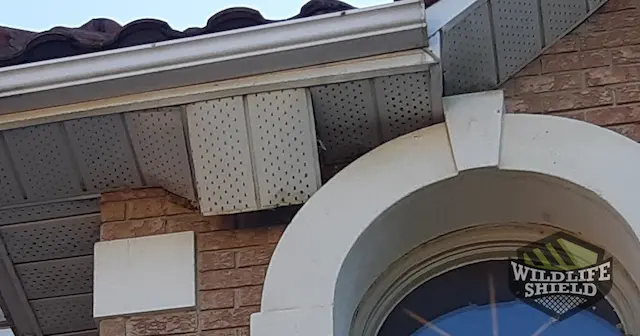
Our technician also found other areas of the roof that were showing excessive damage and could potentially be compromised once we removed the raccoon from the property and sealed its main entry point. We recommended to the customer that these areas be addressed and sealed.
A full inspection of the inside of the attic showed that no babies were present. Our technician performed both a visual inspection and a thermal inspection using a thermal camera. This camera is aimed at the ceiling under the attic and will detect and indicate any warm spots above- a sign that animals may be inside.
Exclusion
Assuming that there may still be animals hiding in the attic, we first install a one-way-door at the primary point of entry. This door allows for the raccoon to move out of the attic and not be able to return into the space. It is made of strong plexiglass and mounted on a galvanized steel mesh enclosure that is firmly secured to the soffit.
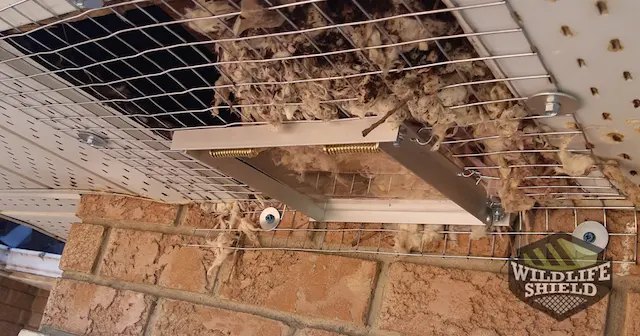
The door will remain in place for several days to give the raccoon enough time to vacate. We then return to remove the door and patch the hole.
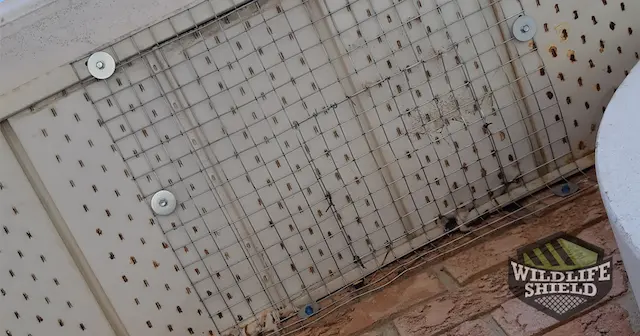
At a soffit intersection of the roof, our technician installed metal flashing to patch a small hole that could potentially be used by wildlife to enter the attic space. These areas of the roof are especially prone to breaching as raccoons can use their weight as leverage to push up on the soffit and eventually break through.
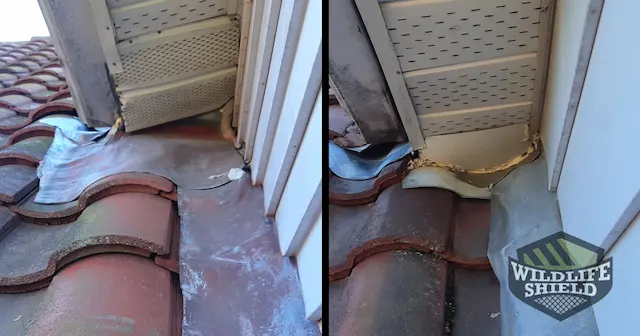
Follow-up
The customer called us a few weeks later to inform us that the noises in the attic had returned. We promptly re-visited the property to inspect our exclusion and ensure that it had not been damaged or removed.
Our exclusion work proved to be solid, and our technician proceeded to inspect the roof once again. We found that a new entry point had been created by the raccoons.
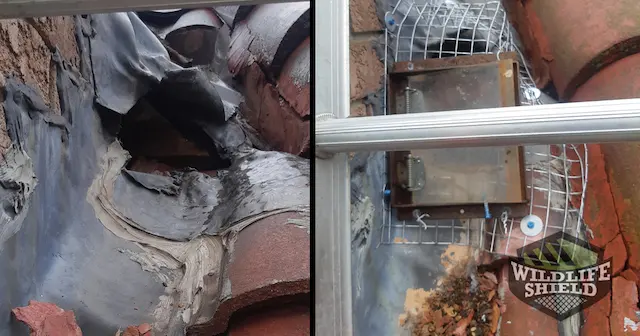
We repeated the same process for the first entry point- installed a one-way-door and allowed time for the raccoon to vacate. We returned to remove the door and the creatures have stayed out since then.
Conclusion
Raccoons are persistent creatures. Once they find a cozy space where they can create a den, they will try to remain in it as long as possible. At this home, the raccoon was able to compromise a second area of the roof to re-enter the structure. It is not a common occurrence, but it does happen. Raccoons are often inclined to develop another den once moved out of an attic.
All our exclusion installations are backed by a 2-year warranty, and should an animal damage or remove our work, we will return and repair or replace.
